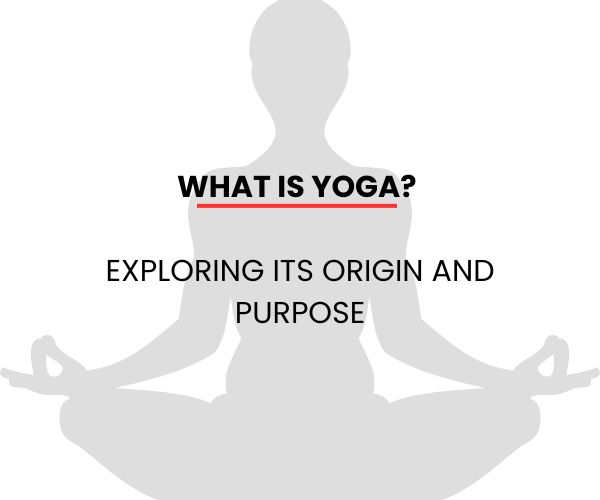Dive deep into the origins and purpose of yoga. Discover its ancient roots, philosophical foundations, and transformative benefits for body, mind, and spirit.

Yoga, derived from the Sanskrit word “Yuj,” meaning “to unite” or “to join,” is a profound practice that harmonizes the body, mind, and spirit. Its origins trace back thousands of years to ancient India, where it was developed as a holistic path to spiritual enlightenment and self-realization. Yoga is more than just physical postures (asanas); it is a comprehensive system encompassing philosophy, ethics, meditation, and a disciplined way of life.
This article delves deep into the authentic teachings of Yoga Shastra, offering a detailed exploration of its origin, purpose, and how it has evolved into the modern practice embraced worldwide.
The Origin of Yoga
Ancient Roots
The origins of yoga are deeply rooted in the Indus Valley Civilization, around 3000 BCE. Archaeological evidence, including seals depicting meditative postures, suggests that yoga was practiced during this period.
- Vedic Era (1500-500 BCE): Yoga concepts first emerged in the Rigveda, one of the oldest texts, which contains hymns and rituals that emphasize meditation and mindfulness. The Vedic sages, or Rishis, sought self-realization through rituals and contemplation.
- Upanishadic Period (800-400 BCE): The Upanishads, spiritual texts, expanded on the idea of yoga as a union of the individual self (Atman) with the universal consciousness (Brahman). The Katha Upanishad introduces terms like “yoga” and emphasizes discipline and meditation.
- Epic Era: The Mahabharata, particularly the Bhagavad Gita, outlines yoga’s three main paths:
- Karma Yoga: The path of selfless action.
- Bhakti Yoga: The path of devotion.
- Jnana Yoga: The path of knowledge.
Classical Era and Patanjali’s Contribution
The codification of yoga is attributed to Patanjali, who compiled the Yoga Sutras around 200 BCE-200 CE. This text outlines the eightfold path of Ashtanga Yoga:
- Yama: Ethical principles (e.g., non-violence, truthfulness).
- Niyama: Personal disciplines (e.g., cleanliness, contentment).
- Asana: Physical postures.
- Pranayama: Breath control.
- Pratyahara: Withdrawal of senses.
- Dharana: Concentration.
- Dhyana: Meditation.
- Samadhi: Ultimate state of absorption and bliss.
The Yoga Sutras emphasize that yoga is not limited to physical exercise but is a spiritual discipline aimed at self-mastery and liberation.
The Purpose of Yoga
Spiritual Awakening
The primary purpose of yoga, as described in Yoga Shastra, is to achieve Moksha (liberation) or freedom from the cycle of birth and death (Samsara). By uniting the individual consciousness with the universal consciousness, practitioners experience inner peace and self-realization.
Physical and Mental Well-Being
Yoga offers a balanced approach to health by harmonizing the body, mind, and breath. Key benefits include:
- Physical Health:
- Improves flexibility, strength, and posture.
- Enhances immune function and overall vitality.
- Mental Health:
- Reduces stress and anxiety.
- Promotes emotional stability and mental clarity.
Ethical Living
The Yamas and Niyamas of Ashtanga Yoga guide practitioners toward ethical living, fostering harmony with oneself, others, and the environment.
Types of Yoga
Over centuries, yoga has diversified into various forms to suit different needs and lifestyles. Some prominent types include:
Hatha Yoga
Focuses on physical postures and breath control to prepare the body for meditation. It is ideal for beginners seeking balance and strength.
Raja Yoga
Known as the “Royal Path,” Raja Yoga emphasizes meditation and mental discipline, following the eightfold path outlined in the Yoga Sutras.
Bhakti Yoga
A devotional path centered on love and surrender to the divine. Bhakti Yoga fosters emotional healing and spiritual connection.
Karma Yoga
The path of selfless action teaches detachment from results, encouraging service to others as a form of spiritual practice.
Jnana Yoga
The path of knowledge and wisdom involves self-inquiry and the study of spiritual texts to realize the ultimate truth.
Kundalini Yoga
Focuses on awakening the dormant energy (Kundalini) at the base of the spine through specific techniques like kriyas, pranayama, and meditation.
Yoga’s Relevance in Modern Times
Stress Management
In today’s fast-paced world, yoga serves as a powerful tool to manage stress and maintain mental equilibrium. Practices like meditation and pranayama reduce cortisol levels and enhance relaxation.
Fitness and Flexibility
While traditional yoga focuses on spiritual growth, its physical aspects have gained popularity for improving fitness, flexibility, and overall health.
Inclusivity and Adaptability
Yoga is accessible to people of all ages, fitness levels, and cultural backgrounds. Modern adaptations, such as chair yoga and therapeutic yoga, make it inclusive.
Key Practices and Techniques
1. Asanas (Postures)
Postures like Tadasana (Mountain Pose) and Savasana (Corpse Pose) promote physical stability and relaxation.
2. Pranayama (Breath Control)
Breathing techniques such as Anulom Vilom (alternate nostril breathing) regulate energy and calm the mind.
3. Dhyana (Meditation)
Meditation practices, including mindfulness and mantra meditation, cultivate inner awareness and mental clarity.
4. Mantras and Chanting
Sacred sounds like “Om” and Vedic chants resonate with the body’s energy centers, enhancing spiritual connection.
Conclusion
Yoga is a timeless practice that transcends cultural and temporal boundaries. Its origins in ancient India reflect a profound understanding of human nature and the path to self-realization. Whether pursued for spiritual awakening, physical health, or mental well-being, yoga offers a holistic solution to modern challenges. Rooted in the authentic teachings of Yoga Shastra, it continues to inspire millions worldwide.
By embracing yoga with dedication and reverence, practitioners can experience its transformative power, unlocking a life of balance, peace, and purpose.
Frequently Asked Questions
- Raja Yoga: Focuses on meditation and mental discipline.
- Karma Yoga: The path of selfless action.
- Bhakti Yoga: Devotion and love for the divine.
- Jnana Yoga: The path of wisdom and knowledge.
- Hatha Yoga: Physical postures and breath control.






